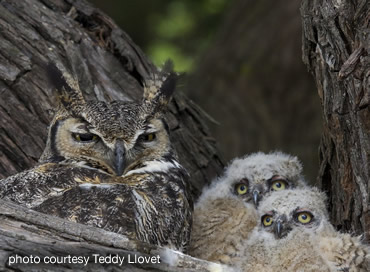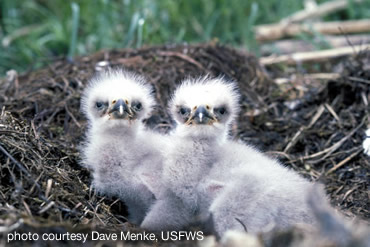Want to watch eagles, falcons and owls with their new hatchlings?
It’s easy, and as close as the internet, and it’s anything but boring.
There’s danger and adventure, and the day-to-day jobs of parents struggling to feed their young ones who grow hungrier and hungrier. And sometimes, yes, sometimes, hatchlings fall out of their nests, or an unwelcome but hungry visitor comes calling when parents leave to find more food.
If you’re stuck at home for the coronavirus break in normal activities, the great outdoors isn’t far away, and that’s especially so for your computer, tablet or mobile phone.
Coincidentally, it’s also the perfect time to check into eagle, falcon and owl nest activities. That’s because hatching time is precisely now.
 Pairs of eagles, falcons and owls have been incubating their eggs for almost a month and a half, waiting for their youngsters to break free. In many areas, that’s already happened. You can tune into a live camera feed to watch feathered family activity, from Minnesota’s eagles to great horned owls in Arizona and peregrine falcons Virginia.
Pairs of eagles, falcons and owls have been incubating their eggs for almost a month and a half, waiting for their youngsters to break free. In many areas, that’s already happened. You can tune into a live camera feed to watch feathered family activity, from Minnesota’s eagles to great horned owls in Arizona and peregrine falcons Virginia.
Years of commitment to conservation by the internationally-recognized American Eagle Foundation have not only helped restore bald eagle numbers, but have helped create a network of public environmental education. Their live video HD cams are available to adults and children to watch as eagle families go about their daily routines.
From the comfort of your home, you can make eagle viewing stop overs in Dollywood, the Great Smoky Mountains, then visit the National Arboretum and Pennsylvania’s eagle cams before making a stop in Northeastern Florida.
Sadly, a college campus in Georgia reports its eagles are missing this year because both eggs proved to be infertile.
If eagles and falcons and owls aren’t enough, wildlife watchers can also catch live-streaming of Arizona’s wintering sandhill cranes at Whitewater Draw, or check the nest watcher reports of the eagles at Lake Pleasant, and even peek in on those insect-eating pollinators, our bat friends, on the Game and Fish Department bat cam.
Arizona also hasn’t forgotten its endangered desert pupfish at Mesa Community College. There’s a live-streaming view of the pupfish, as well.
If you’re looking for an entertaining way to develop your skills as a citizen scientist, the next few weeks of eagle, owl, falcon and bat viewing can provide the perfect opportunity.
______________________________________________
If you live in Ohio . . . see a nest, count a nest
For the first time in eight years, the Ohio Department of Natural Resources Division of Wildlife is attempting to find every bald eagle nest in the state, so they’ve asked citizen scientists to help and report their nest sightings. Citizen scientists can submit sightings online until March 31, 2020.
“Wildlife biologists estimate that Ohio hosted more than 350 nesting pairs of bald eagles in 2019,” said Kendra Wecker, Division of Wildlife chief. “Many of those nests are situated along Ohio’s portion of Lake Erie, and along with Ohio’s rivers and reservoirs.”
 Ohio Division of Wildlife biologists typically estimate the number of eagle nests by flying select areas of the state and verifying sightings. However, identifying the locations of all the nests in the state hasn’t been attempted since bald eagles were delisted in 2012.
Ohio Division of Wildlife biologists typically estimate the number of eagle nests by flying select areas of the state and verifying sightings. However, identifying the locations of all the nests in the state hasn’t been attempted since bald eagles were delisted in 2012.
Wildlife staff, including wildlife officers, along with some help from Ohio’s citizen scientists, will verify nest locations. This will help update the Division of Wildlife’s historical databases and confirm the results of estimated counts.
Bald eagles in Ohio typically lay eggs and incubate in February and March. Young eagles leave the nest about three months later, usually in June. The birds nest in large trees such as sycamores, oaks and cottonwoods that grow near large bodies of water. Fish and carrion are preferred foods.
Remember, bald eagles are protected under the state and federal Bald and Golden Eagle Protection Act. It is illegal to disturb bald eagles. When viewing these majestic birds, remember to respect the bird’s space and stay at least 100 yards away from the bird or nest. Disturbing bald eagles at the nest site could lead the pair to abandon the eggs.
Watch for updates of verified nests throughout the coming months.
– Resources: Minnesota Department of Natural Resources, Arizona Department of Natural Resources, Virginia Department of Game & Inland Fisheries, Ohio Department of Natural Resources, and the American Eagle Foundation.